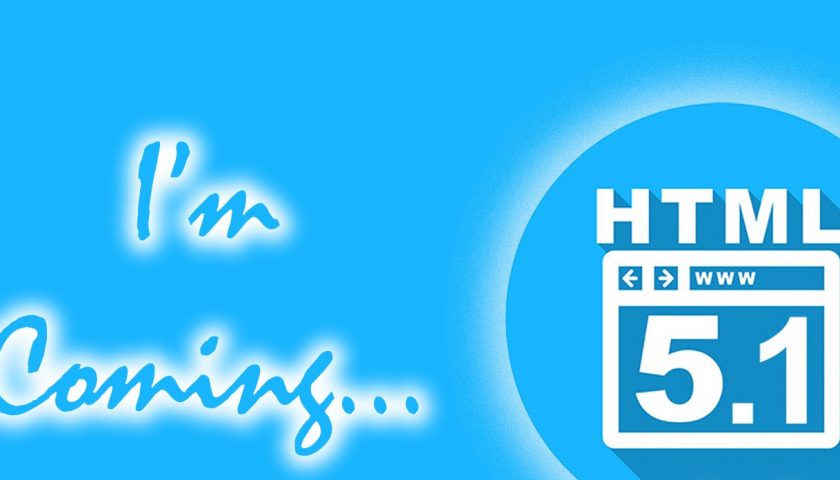The HTML 5.1 standard has been promoted from a “Release Candidate” to a “Proposed Recommendation,” the last step before it becomes a “W3C Recommendation” and officially replaces HTML 5 as the current HTML standard.
As a Proposed Recommendation, HTML 5.1 is practically locked against major changes, and outside small tweaks here and there, we are currently looking at a 99.99 percent version of the upcoming HTML 5.1 standard.
The vote to promote HTML 5.1 from RC to PR was approved in unanimity, a clear sign that major browser makers have reached a general consensus on what the standard should look like, and what they should be implementing in their browsers in upcoming versions.
< picture >
Let’s start with the first. We all remember the social media push to make the < picture > tag a part of HTML5. Unfortunately, the campaign was too late to catch a train with the HTML5 spec, but the WHATWG group picked up the slack, and through hard work from browser vendors, the tag is already implemented and has shipped in Chrome, Opera, Firefox, Safari, and Edge.
Technically, all browsers already honor this tag, and W3C is only making it official by adding the < picture > tag into the HTML 5.1 standard’s text.
The new HTML 5.1 spec not only includes the < picture > tag, but also the srcset attribute, which goes hand in hand with the first and already are a developer’s favorite tools for supporting responsive images on their sites.
If you’d like to get acquainted with the new tag, you can find all the tutorials you want on the Responsive Images website.
< dialog >
Another self-explanatory tag is the < dialog > tag, currently supported only in Chrome and Opera, and labeled as “under consideration” by the Edge team.
This new tag will let developers create dialog windows (popups) inside the HTML code, with less JavaScript code than before.
You can pass anything you like inside a < dialog > tag, from text to images, and in theory, this tag should be the death of all those “lightbox” and “modal” plugins that have flooded the open source ecosystem since the mid-2000s.
< summary > & < details >
These two tags work together, and the (unconfirmed) rumor is that they were added to simplify the creation of collapsible elements.
We’ve seen many developers in the past employ HTML tags in never-before-seen ways, so don’t be surprised if you see them used for some other UI widget as well.
Currently, < summary > & < details > are supported and have shipped in Chrome, Opera, Firefox, and Safari. The Microsoft has these two tags as “under consideration,” but we doubt this won’t make it in their browser after W3C officially releases HTML 5.1.
For Detailed Features Click Here
Source :W3C
Arjun is a Full-stack developer, who is fond of the web. Lives in Chikmagalur, Karnataka, India

